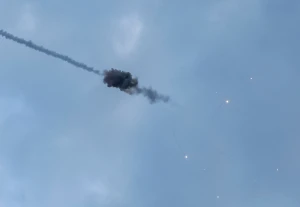
Donetsk region’s hospitals treat up to two hundred patients per day – Smart medical aid foundation
Iryna Rybinkina, head of the Smart medical aid foundation, said that civilian and military medicine now closely intertwine in the region. The foundation is trying to provide frontline hospitals with the necessary equipment and train staff
Iryna Rybinkina spoke about this in the War and Volunteers program hosted by Espreso.
"Russian troops are shelling civilian hospitals and doctors. This is a psychological tactic they used in Syria and other wars," says Iryna Rybinkina. "Since the beginning of the full-scale invasion, we have not only brought a lot of medical aid to hospitals and started training doctors. We also looked at what was needed. What is happening in the hospitals in the contact line is on a large scale. We receive a lot of requests for this or that equipment. And we always have a question: do you know how to use it? Sometimes we receive requests for one thing, and when we start talking to the hospital, we find out that they need absolutely the opposite. For example, we were recently asked for an ambulance for one of the units, we started talking and it turned out that they needed to equip their primary surgical team completely. We counted the minimum equipment for six million hryvnias. Because all they have available is two anesthesia machines. But they were given the task to deploy this primary surgical group."
According to Iryna Rybinkina, hospitals in the Donetsk region combine civilian and military medicine.
"Any civilian hospital has a primary surgical team, a system of establishing stabilization centers," Rybinkina continues, "It can be any basement where a mini-operating room is set up, so that it is close to the contact line, so that the patient can be helped and the injuries can be analyzed. Next, large prefabricated staging areas have been formed, mobile military hospitals have been established, which are located in the evacuation zone. They do the main work to stabilize the patient, and then they are evacuated across Ukraine. The flow depends on what is happening. There may be two patients, there may be 200 patients per day. That's why they are always on the alert and always at work."
- News













































